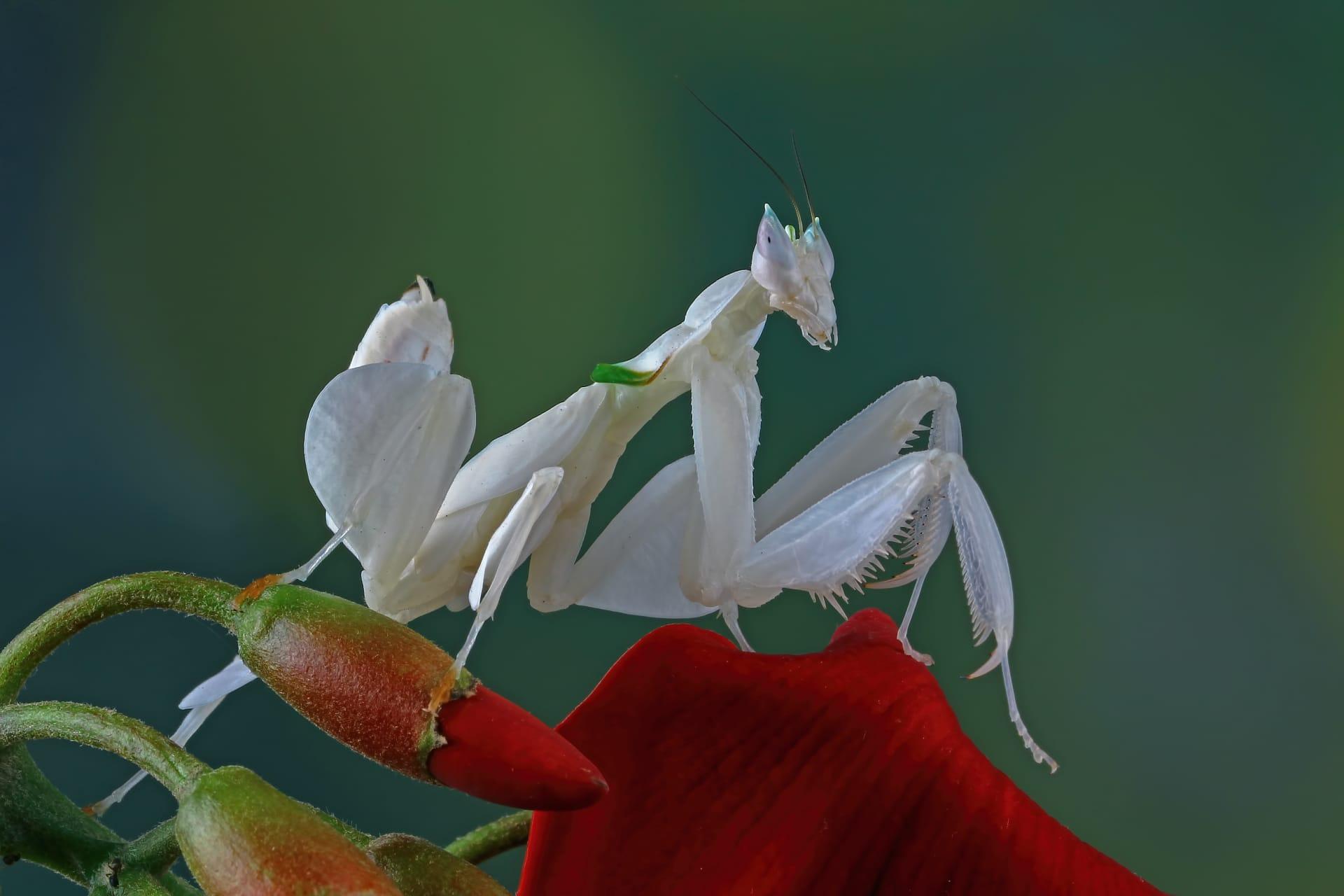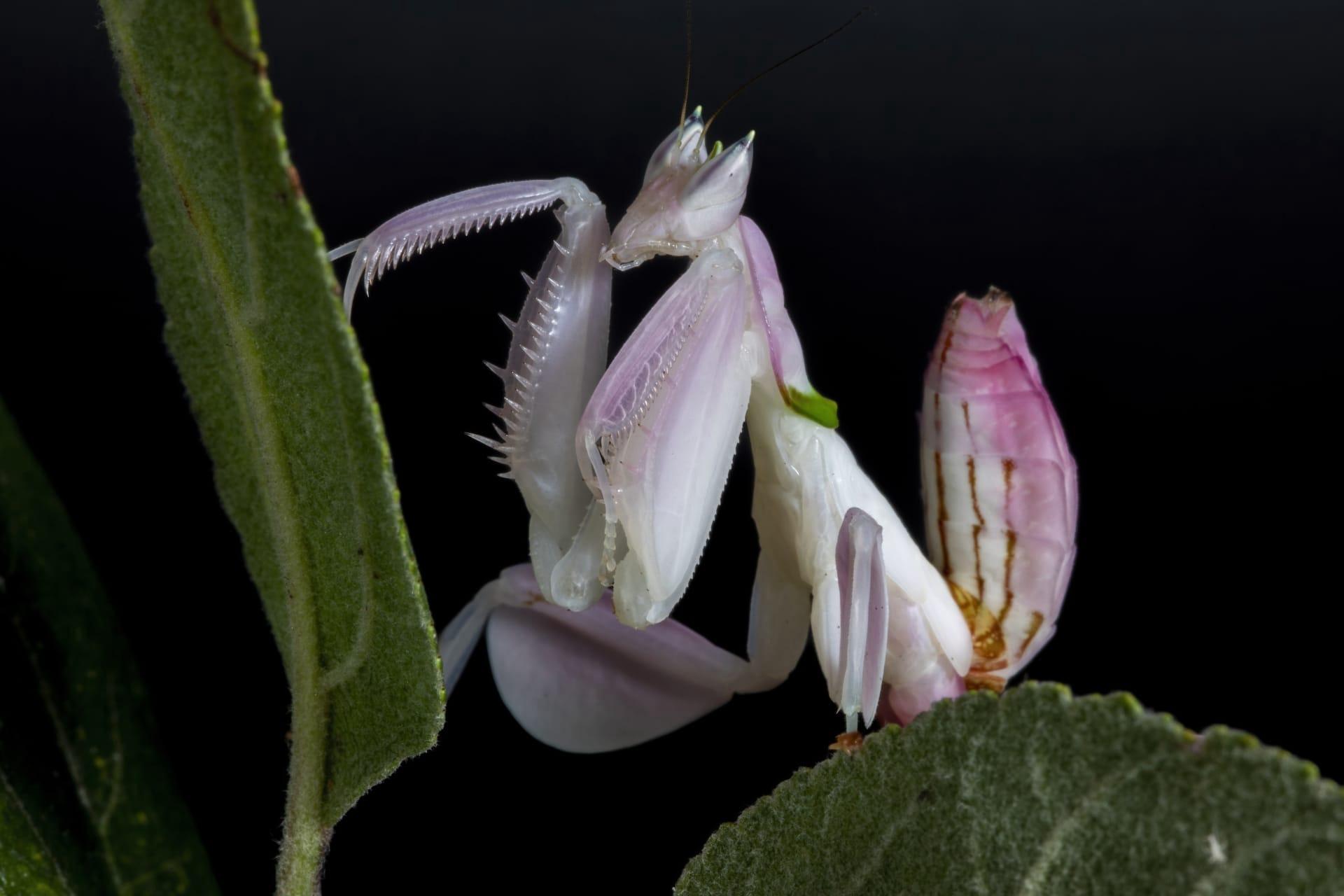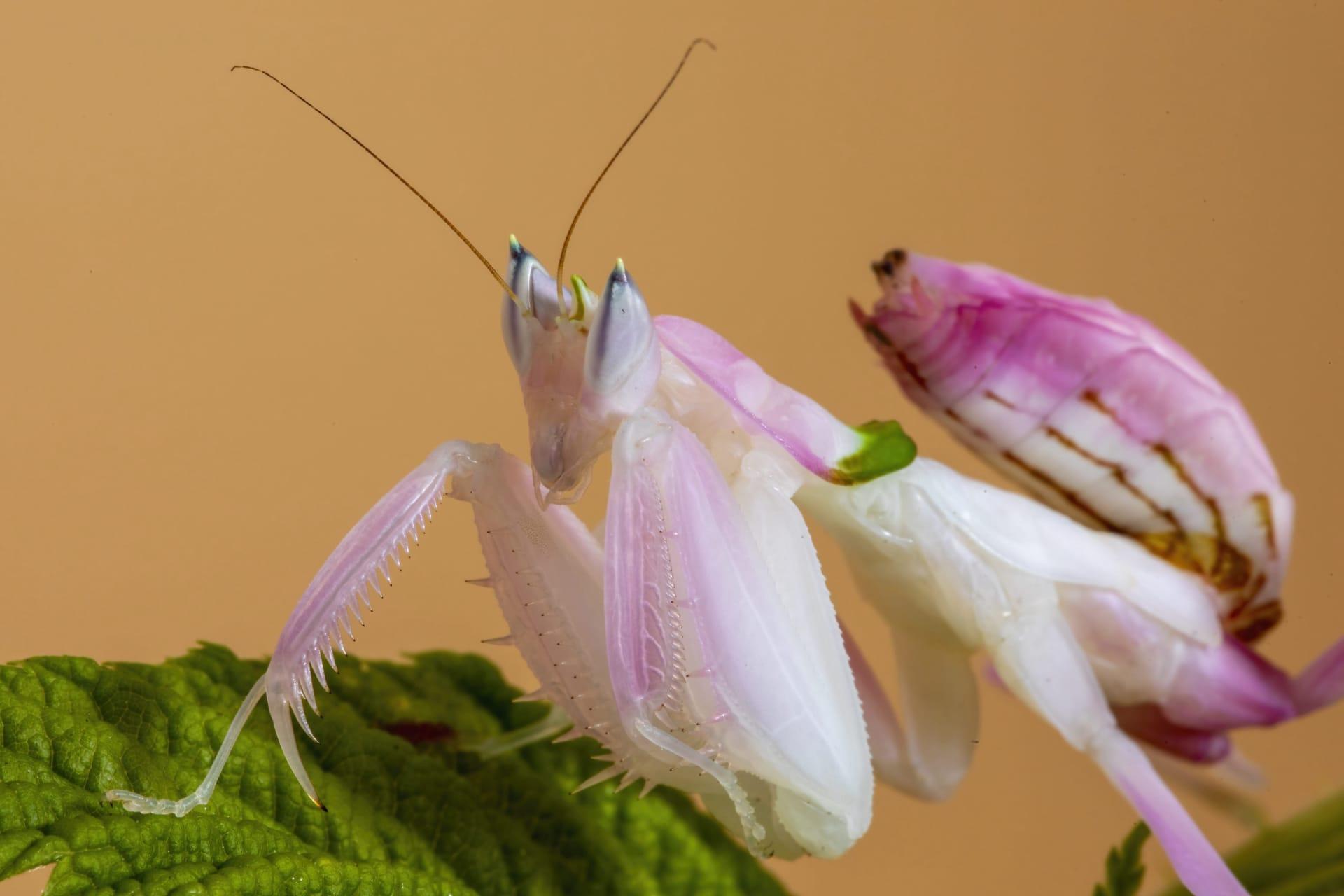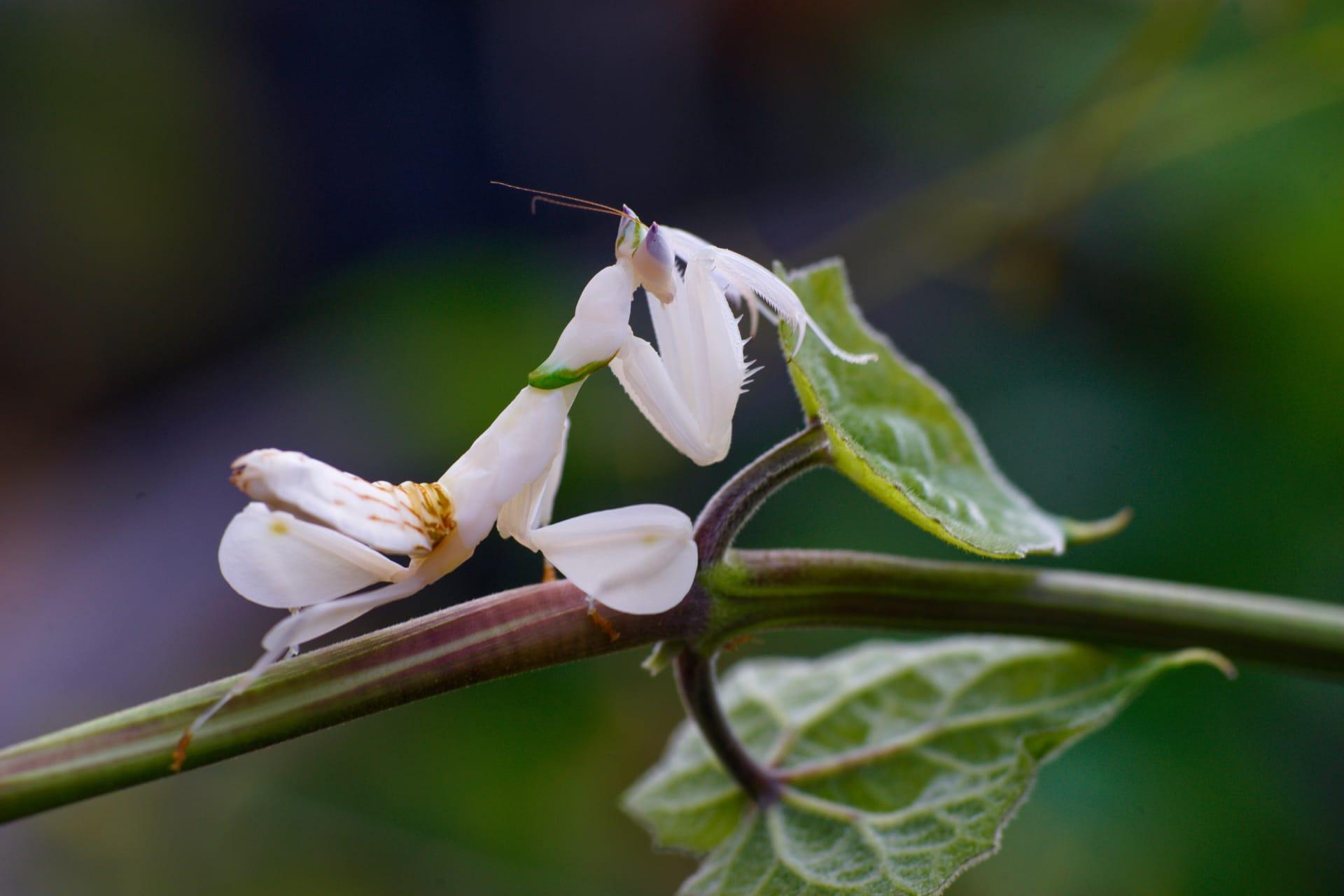Orchid Mantis Trivia
- Home /
- Trivia Question /
- Animal /
- Orchid Mantis Trivia
1
Question: How does the Orchid Mantis mimic an orchid flower?
Answer: The Orchid Mantis, known scientifically as Hymenopus coronatus, is a master of disguise. Its body, primarily the legs, is adorned with bright pink and white markings that closely resemble the petals of an orchid flower. This mantis can also adjust its color over a few days to match its environment, usually a range of pinks and whites, making it almost indistinguishable from real orchids. This camouflage not only hides it from predators but also helps it to ambush prey, mainly pollinating insects drawn to the 'flower'.
Question: What is the typical size of an Orchid Mantis?
Answer: The Orchid Mantis is a relatively small insect. Females, which are larger than males, grow up to about 2.5 to 3 inches (6.4 to 7.6 cm) in length. Males, on the other hand, reach only about 1 to 1.5 inches (2.5 to 3.8 cm). Despite their small size, they are quite noticeable due to their bright coloration and flower-like appearance.

2
Question: Do Orchid Mantises only live on orchid flowers?
Answer: Contrary to popular belief, Orchid Mantises do not exclusively live on orchid flowers. They are found in various environments across Southeast Asia, including rainforests and gardens. While they often perch on flowering plants to blend in and hunt, they are not dependent on orchids and can thrive in various plant settings.
Question: Can Orchid Mantises change color to match any flower?
Answer: While Orchid Mantises are known for their color-changing ability, it's a common misconception that they can match any flower's color. They primarily display shades of pink and white, which are effective in mimicking orchid flowers but may not perfectly match other flowers. This limitation, however, does not significantly impact their ability to camouflage and hunt effectively.

3
Question: What do Orchid Mantises eat?
Answer: Orchid Mantises, like other mantis species, are carnivorous and primarily prey on live insects. Their diet mainly consists of pollinators such as butterflies, bees, and flies that are attracted to flowers. The mantis uses its flower-like appearance to ambush these insects, striking swiftly with its powerful front legs.
Question: How do Orchid Mantises reproduce?
Answer: The reproduction process of Orchid Mantises is fascinating yet perilous, especially for males. After a courtship dance, the male cautiously approaches the female to mate. However, there is a significant risk involved as the female might attack and eat the male before or after mating. This behavior, known as sexual cannibalism, provides the female with nutrition beneficial for egg production.

4
Question: Are Orchid Mantises good at camouflaging?
Answer: Orchid Mantises are exceptionally skilled at camouflage. Their body mimics the shape and color of orchid petals, allowing them to blend seamlessly with their floral surroundings. This camouflage is not just visual; they also adopt the still, swaying movements of a flower in the breeze, further enhancing their disguise.
Question: How long do Orchid Mantises live?
Answer: The lifespan of Orchid Mantises varies between genders. Females typically live for about 6 to 8 months, while males have a shorter lifespan of around 5 to 6 months. This difference is partly due to the risks males face during mating and their smaller size, which may make them more vulnerable to predators.

5
Question: Can Orchid Mantises be kept as pets?
Answer: Yes, Orchid Mantises can be kept as pets, and they are popular in the exotic pet trade due to their unique appearance. However, they require specific care, including appropriate humidity, temperature, and feeding with live insects. It's important for potential owners to research and understand their needs for a healthy environment.
Question: How do Orchid Mantises interact with other species?
Answer: Orchid Mantises have a unique interaction with their ecosystem. While they mimic flowers to attract prey, they can also benefit plants by controlling the population of harmful insects. However, they are solitary creatures and do not interact socially with other mantises, except during mating. Their primary focus is on camouflage and predation, playing a distinct role in their habitat's ecological balance.